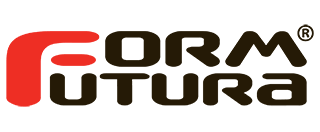
A FormFutura foi fundada em 2012, em Amesterdão, Holanda., de produção de filamentos para impressão 3D de alta qualidade.
Tornou-se rapidamente numa marca inconfundível com clientes em todo o mundo.

FormFutura Economy LCD Resin is our entry level 3D printing resin. This resin is ideal for beginners and prints with a very limited smell. It combines accuracy with short curing times and a nice matte surface finish. Our Economy LCD Resin makes resin 3D printing more accessible.
Resin printing doesn't have to be more expensive than 3D printing with filament!
Important key features
Suitable applications
Physical properties after post curing
This data provided for those properties are typical values, and should not be construed as sales specifications.
Specimen printed in ZXY Orientation (ISO 52921) and examined according to ISO 17296-3.
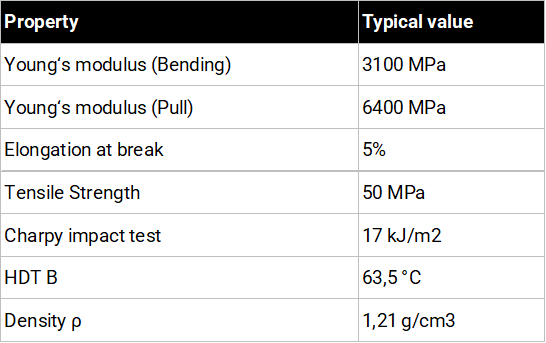
Please note that the above-displayed values can vary with individual machine processing, post-curing parts, geometry, print orientation, print settings, and temperature.
Specimens have been post-cured for 30 minutes with 200W and 405nm UV LED conditioned for 72 hours at 23°C and 50% humidity.
Preparation(s) before starting to print
Post-processing
Safety
Please always be aware that when 3D printing with resins that you are working with chemicals and that you should always be cautious and use the personal protective equipment as stipulated in our safety data sheets.
Utilização:
Como armazenar:
Embalagem compacta e segura:
Características:
Economy LCD Series Resina Impressão 3D LCD e DLP UV (385 - 420nm) - Tipo de Produto
1000ml - Quantidade
Grey - Cor

A FormFutura foi fundada em 2012, em Amesterdão, Holanda., de produção de filamentos para impressão 3D de alta qualidade.
Tornou-se rapidamente numa marca inconfundível com clientes em todo o mundo.

FormFutura Economy LCD Resin is our entry level 3D printing resin. This resin is ideal for beginners and prints with a very limited smell. It combines accuracy with short curing times and a nice matte surface finish. Our Economy LCD Resin makes resin 3D printing more accessible.
Resin printing doesn't have to be more expensive than 3D printing with filament!
Important key features
Suitable applications
Physical properties after post curing
This data provided for those properties are typical values, and should not be construed as sales specifications.
Specimen printed in ZXY Orientation (ISO 52921) and examined according to ISO 17296-3.

Please note that the above-displayed values can vary with individual machine processing, post-curing parts, geometry, print orientation, print settings, and temperature.
Specimens have been post-cured for 30 minutes with 200W and 405nm UV LED conditioned for 72 hours at 23°C and 50% humidity.
Preparation(s) before starting to print
Post-processing
Safety
Please always be aware that when 3D printing with resins that you are working with chemicals and that you should always be cautious and use the personal protective equipment as stipulated in our safety data sheets.
Utilização:
Como armazenar:
Embalagem compacta e segura:
Características:
Economy LCD Series Resina Impressão 3D LCD e DLP UV (385 - 420nm) - Tipo de Produto
1000ml - Quantidade
Dark Grey - Cor

A FormFutura foi fundada em 2012, em Amesterdão, Holanda., de produção de filamentos para impressão 3D de alta qualidade.
Tornou-se rapidamente numa marca inconfundível com clientes em todo o mundo.

FormFutura Economy LCD Resin is our entry level 3D printing resin. This resin is ideal for beginners and prints with a very limited smell. It combines accuracy with short curing times and a nice matte surface finish. Our Economy LCD Resin makes resin 3D printing more accessible.
Resin printing doesn't have to be more expensive than 3D printing with filament!
Important key features
Suitable applications
Physical properties after post curing
This data provided for those properties are typical values, and should not be construed as sales specifications.
Specimen printed in ZXY Orientation (ISO 52921) and examined according to ISO 17296-3.

Please note that the above-displayed values can vary with individual machine processing, post-curing parts, geometry, print orientation, print settings, and temperature.
Specimens have been post-cured for 30 minutes with 200W and 405nm UV LED conditioned for 72 hours at 23°C and 50% humidity.
Preparation(s) before starting to print
Post-processing
Safety
Please always be aware that when 3D printing with resins that you are working with chemicals and that you should always be cautious and use the personal protective equipment as stipulated in our safety data sheets.
Utilização:
Como armazenar:
Embalagem compacta e segura:
Características:
Economy LCD Series Resina Impressão 3D LCD e DLP UV (385 - 420nm) - Tipo de Produto
1000ml - Quantidade
Dark Green - Cor

A FormFutura foi fundada em 2012, em Amesterdão, Holanda., de produção de filamentos para impressão 3D de alta qualidade.
Tornou-se rapidamente numa marca inconfundível com clientes em todo o mundo.

FormFutura Economy LCD Resin is our entry level 3D printing resin. This resin is ideal for beginners and prints with a very limited smell. It combines accuracy with short curing times and a nice matte surface finish. Our Economy LCD Resin makes resin 3D printing more accessible.
Resin printing doesn't have to be more expensive than 3D printing with filament!
Important key features
Suitable applications
Physical properties after post curing
This data provided for those properties are typical values, and should not be construed as sales specifications.
Specimen printed in ZXY Orientation (ISO 52921) and examined according to ISO 17296-3.

Please note that the above-displayed values can vary with individual machine processing, post-curing parts, geometry, print orientation, print settings, and temperature.
Specimens have been post-cured for 30 minutes with 200W and 405nm UV LED conditioned for 72 hours at 23°C and 50% humidity.
Preparation(s) before starting to print
Post-processing
Safety
Please always be aware that when 3D printing with resins that you are working with chemicals and that you should always be cautious and use the personal protective equipment as stipulated in our safety data sheets.
Utilização:
Como armazenar:
Embalagem compacta e segura:
Características:
Economy LCD Series Resina Impressão 3D LCD e DLP UV (385 - 420nm) - Tipo de Produto
1000ml - Quantidade
Blue - Cor

A FormFutura foi fundada em 2012, em Amesterdão, Holanda., de produção de filamentos para impressão 3D de alta qualidade.
Tornou-se rapidamente numa marca inconfundível com clientes em todo o mundo.

FormFutura Economy LCD Resin is our entry level 3D printing resin. This resin is ideal for beginners and prints with a very limited smell. It combines accuracy with short curing times and a nice matte surface finish. Our Economy LCD Resin makes resin 3D printing more accessible.
Resin printing doesn't have to be more expensive than 3D printing with filament!
Important key features
Suitable applications
Physical properties after post curing
This data provided for those properties are typical values, and should not be construed as sales specifications.
Specimen printed in ZXY Orientation (ISO 52921) and examined according to ISO 17296-3.

Please note that the above-displayed values can vary with individual machine processing, post-curing parts, geometry, print orientation, print settings, and temperature.
Specimens have been post-cured for 30 minutes with 200W and 405nm UV LED conditioned for 72 hours at 23°C and 50% humidity.
Preparation(s) before starting to print
Post-processing
Safety
Please always be aware that when 3D printing with resins that you are working with chemicals and that you should always be cautious and use the personal protective equipment as stipulated in our safety data sheets.
Utilização:
Como armazenar:
Embalagem compacta e segura:
Características:
Economy LCD Series Resina Impressão 3D LCD e DLP UV (385 - 420nm) - Tipo de Produto
1000ml - Quantidade
Black - Cor

A FormFutura foi fundada em 2012, em Amesterdão, Holanda., de produção de filamentos para impressão 3D de alta qualidade.
Tornou-se rapidamente numa marca inconfundível com clientes em todo o mundo.

FormFutura Economy LCD Resin is our entry level 3D printing resin. This resin is ideal for beginners and prints with a very limited smell. It combines accuracy with short curing times and a nice matte surface finish. Our Economy LCD Resin makes resin 3D printing more accessible.
Resin printing doesn't have to be more expensive than 3D printing with filament!
Important key features
Suitable applications
Physical properties after post curing
This data provided for those properties are typical values, and should not be construed as sales specifications.
Specimen printed in ZXY Orientation (ISO 52921) and examined according to ISO 17296-3.

Please note that the above-displayed values can vary with individual machine processing, post-curing parts, geometry, print orientation, print settings, and temperature.
Specimens have been post-cured for 30 minutes with 200W and 405nm UV LED conditioned for 72 hours at 23°C and 50% humidity.
Preparation(s) before starting to print
Post-processing
Safety
Please always be aware that when 3D printing with resins that you are working with chemicals and that you should always be cautious and use the personal protective equipment as stipulated in our safety data sheets.
Utilização:
Como armazenar:
Embalagem compacta e segura:
Características:
Economy LCD Series Resina Impressão 3D LCD e DLP UV (385 - 420nm) - Tipo de Produto
1000ml - Quantidade
Warm Grey - Cor

A FormFutura foi fundada em 2012, em Amesterdão, Holanda., de produção de filamentos para impressão 3D de alta qualidade.
Tornou-se rapidamente numa marca inconfundível com clientes em todo o mundo.
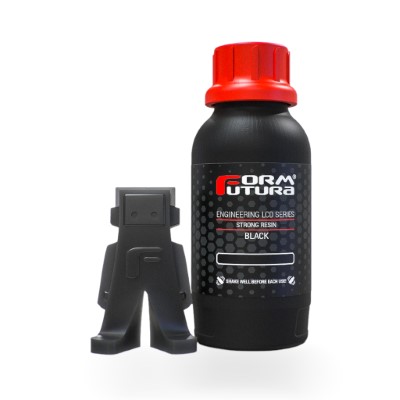
Engineering LCD Series – Strong Resin is a 3D printing resin that finds its "strength" in a unique combination of excellent flexural strength properties with impressive tensile strength properties.
Formfutura’s Engineering LCD Series photopolymer 3D printing resins are specifically engineered for compatibility and excellent processability with all type of open source LCD / LED / MSLA 3D printers.
Engineering LCD Series – Strong Resin
Key features
Applications
Anycubic Mono SE
50µm
First / Burn-in / Bottom Layers: 4x to 6x for 65 to 70 Seconds
Exposure Time Normal Layers: 11.5 to 12.6 Seconds
Lifting Distance: 6mm
Bottom Lifting Distance: 8mm
Lifting Speed:85mm/min & 240mm/min
Rest Time Before Lift: 2 Seconds
Rest Time After Retract: 1 Second
Anycubic Mono X
50µm
First / Burn-in / Bottom Layers: 2x to 4x for 60 to 70 Seconds
Exposure Time Normal Layers: 4.8 to 5.2 Seconds
Lifting Distance: 6mm
Bottom Lifting Distance: 8mm
Lifting Speed:85mm/min & 240mm/min
Rest Time Before Lift: 2 Seconds
Rest Time After Retract: 1 Second
UV Power: 100%
Elegoo Saturn 4K
50µm
First / Burn-in Layers: 3x to 4x for 40 to 45 Seconds
Normal Layers: 11.5 to 12.5 Seconds
Lifting Distance: 6mm
Light-off Delay: 1
Bottom Light-off Delay: 3
100µm
First / Burn-in Layers: 3x to 4x for 45 to 55 Seconds
Normal Layers: 15.5 to 16.5 Seconds
Lifting Distance: 6mm
Light-off Delay: 1
Bottom Light-off Delay: 3
Comparison of technical specifications for FormFutura Engineering LCD Series 3D printing resin
Please note that the above-displayed values can vary with individual machine processing, post-curing parts, geometry, print orientation, print settings, and temperature.
Preparation(s) before starting to print
Post-processing
Safety
Please always be aware that when 3D printing with resins that you are working with chemicals and that you should always be cautious and use the personal protective equipment as stipulated in our safety data sheets.
Utilização:
Como armazenar:
Embalagem compacta e segura:
Características:
Engineering Series Strong Resin Resina Impressão 3D SLA LCD DLP UV (300-410nm) Black Preto - Tipo de Produto
500ml - Quantidade
Cinzento - Cor

ProtoPasta é uma empresa situada nos Estados Unidos da América, de produção de filamentos para impressão 3D de alta qualidade.
Caracterizada pelos rolos feitos em cartão, esta marca é mundialmente famosa por ser especializada em materiais como PLA e ABS modificados com outros materiais, como o PLA Magnético; o PLA Condutivo; PLA de fibra de carbono; HTPLA de cobre, latão ou bronze; ou o ABS-PC.
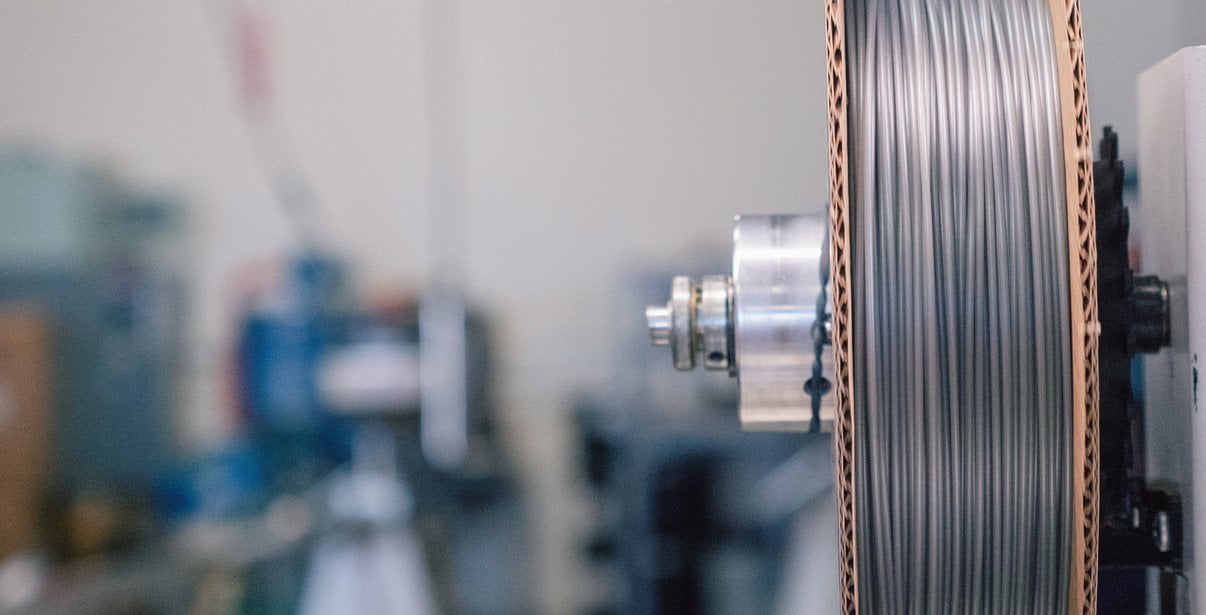
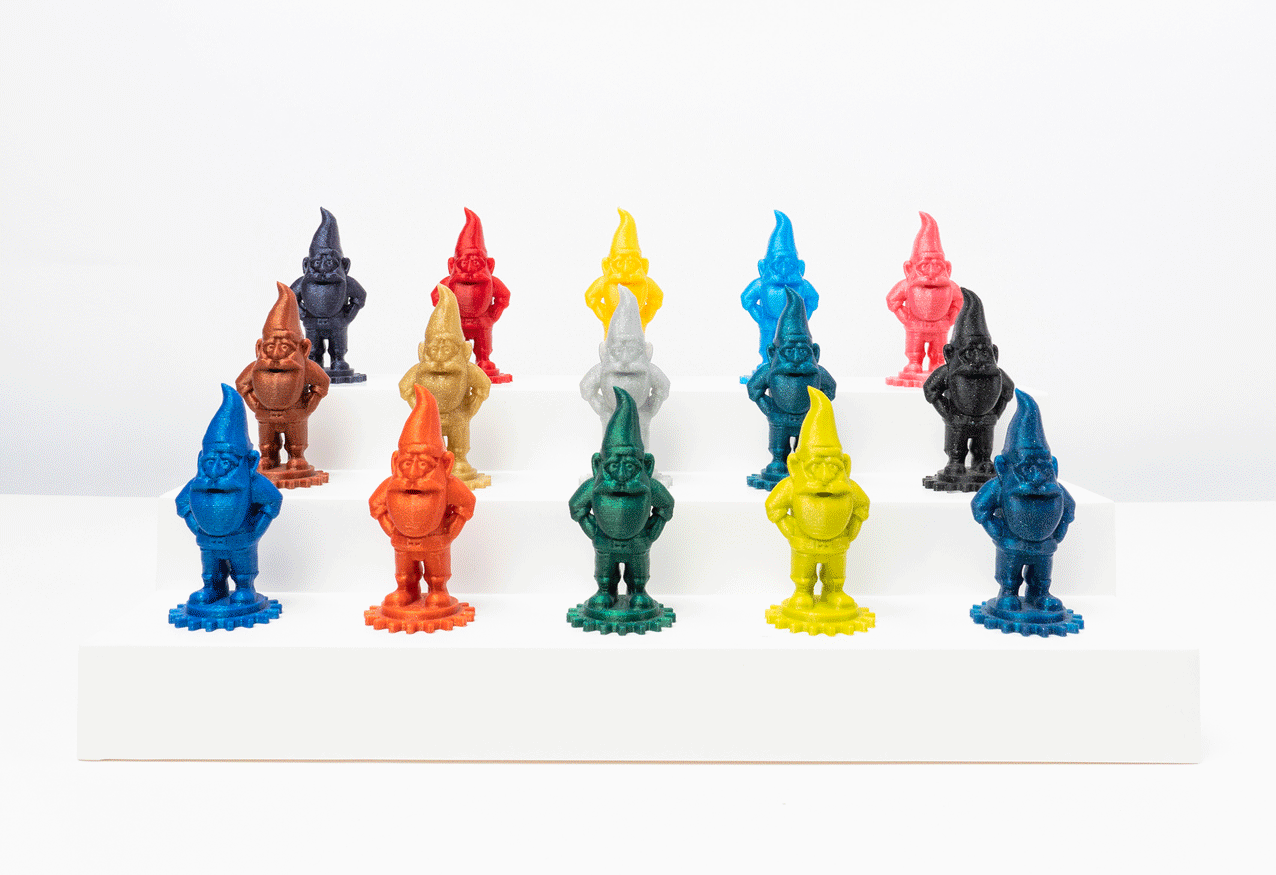
Another shout out to Thomas Sanladerer (toms3d.org) for the challenge to make an ugly color during his visit.
We ended up with some greens that weren't terrible and found it's very difficult to make an ugly color.
To be honest, Lulzbot's company green is not my favorite color, but it was a fun challenge to recreate this color.
I was inspired by the recent Mini 2 release shortly after ERRF.
Realizing I'd missed seeing Lulzbot at ERRF, I followed my inspiration to make For the Lulz Metallic Green HTPLA .
Who knew adding sparkles would totally change my impression of this color? In the light it shifts from lemon to lime covering all the versions I've seen of this color.
I find it shockingly beautiful and I hope you do to! Enjoy!!!
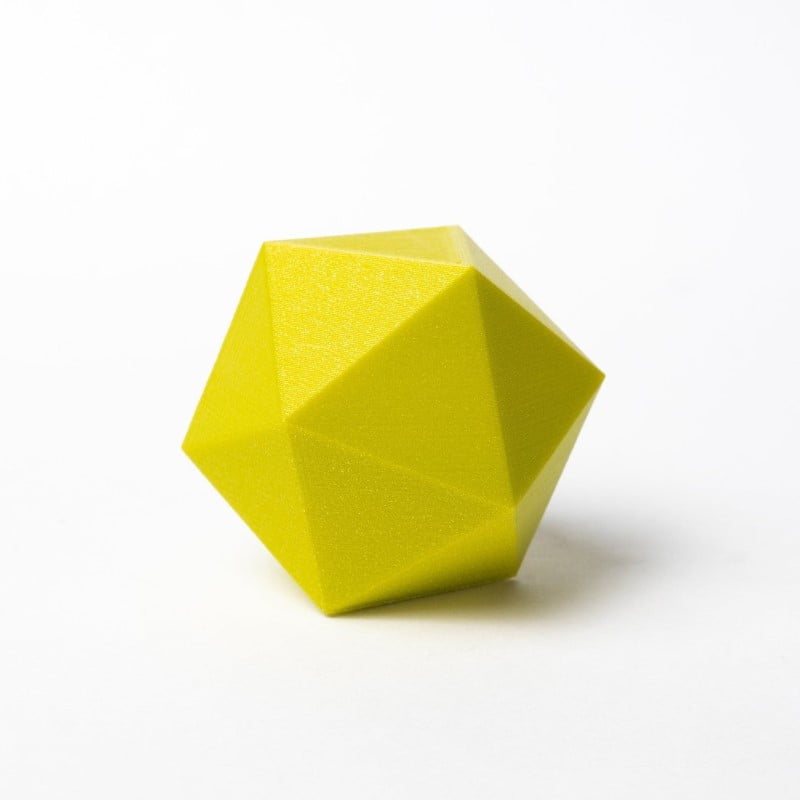

Print with the ease of standard PLA with standard hardware and temperatures, but make fun, mesmerizing prints that stand out. Celebrate good times by printing toys, treasures, and keepsakes. If you want to make a print more fun, just add some metallic pop! Our metallic finish contains no actual metal and has little risk of clogging or wearing your nozzle, and it won't make a glittery mess, but beware the printing is sure to be addictive! Metallic particles are relatively small but have some orientation effects, giving top/bottom surfaces more shine than sidewall, so have some fun playing with orientation to see how the result changes! We recommend 0.2 mm layers for the best result.
Like our other HTPLAs, Metallic HTPLA can be "Heat Treated" to increase crystallinity for "Higher Temperature" resistance compared to amorphous PLA, ABS, and co-polyesters like PETG! Glittler Flake HTPLA prints translucence, but turns opaque when heat treated (or crystallized). With a more crystalline structure, heat treated HTPLA parts can hold form to near melting, though temperatures where the material is practically useful vary greatly depending on geometry and load conditions! For this improved the performance, your prints should be baked in an oven until you see a change from translucent to opaque with reduced gloss. This visual change indicating the improved performance! We've seen the change take place in 5-10 minutes on thin walled parts but can take an hour or more. We've had good luck in a quality, at home convection oven at 110C (225F). Parts will get very "floppy" before becoming more firm, so please leave supports on your parts or support them and bake them on a flat, non-radiating surface (like glass, ceramic, or composite).
For this improved performance, your prints should be baked in an oven until you see a change from translucent pink to opaque pink with reduced gloss. This visual change indicates the improved performance! We've seen the change take place in 5-10 minutes on thin walled parts but can take an hour or more. We've had good luck in a quality, at home convection oven at 110C (225F). Parts will get very "floppy" before becoming more firm, so please leave supports on your parts or support them and bake them on a flat, non-radiating surface (like glass, ceramic, or composite).
In our experience, good results were achieved using standard PLA parameters ranging from 195-225C nozzle with standard build surface preparation (blue tape, glue stick, or BuildTak). No heated bed required but up to 60C is okay. Beware, if the bed temperature is too high, your part base could actually heat treat while printing, increasing warping and decreasing adhesion. Some shrinkage will occur in the heat treating process, so dimension critical parts may need to be scaled appropriately (as much as 2.5% in our experience).
Looking for increased heat resistance without the need to switch to ABS? Protopasta High Temperature PLA offers heat deflection of up to 88° C (190.4° F) compared to standard PLA of 45-54° C (113-135° F). This makes it a great choice for moving parts (gears, RepRap pieces, etc) or prints that would face moderately high temperatures. Our High Temperature PLA is white, but can be painted after annealing.
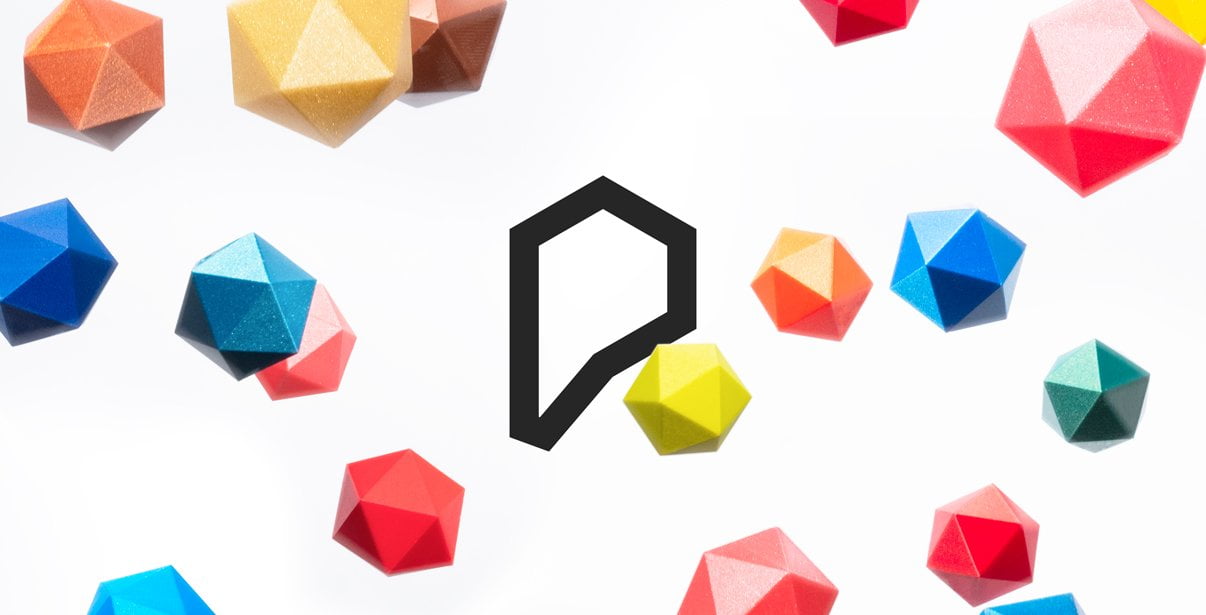
We've created this page to bring you a premium PLA and HTPLA printing experience that rivals our premium material. Follow below to improve your 3D printing experience. In other words, here's your shortcut to awesomeness with pasta. If at the end of this document you have questions or need assistance, please contact us at [email protected].
Loose coils can be very tricky to manage. Going cowboy on your spool handling can quickly end up in a frustrating, tangled mess. Keep your loose coils wrangled with a spool holder like masterspool for a more trouble-free experience. Find out more about loose coil handling in Keith's blog post.
And for spooled filament, never let go of the loose end. When not in the printer extruder, tuck it away in the cardboard spool's corrugation! Also, avoid sharp bends and excessive force when loading filament into your printer.
At Proto-pasta, we make high quality filament. We aspire to make exceptional results easy, but a positive result is very much dependent on your hardware, set-up, adjustments, and process parameters. Matching hardware with process and material for a positive experience is not always straight-forward, but you can start by pairing the following settings with your printer for a good starting point, then tune or troubleshoot as required.
Volume flow rate together with temperature dictates how melted the material is. This is hardware & condition dependent based on hot end, nozzle & extruder type, material & manufacturer as well as layer fan type, position & settings. Extrusion width, layer thickness & speed changes affect volume flow which may change required/desired temperature.
Post your prints & tag us @Proto_pasta on Twitter and Instagram. Need more help? Consider typical pitfalls and fixes below.
We visited Joel and ended up with a helpful video on the subject:
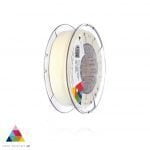
Para uma correcta manutenção da sua impressora 3D, recomendamos sempre que trocar de material de filamento 3D, a efectuar uma purga com filamento especial de limpeza.
Desta forma garante que não ficam vestígios de material nas paredes do nozzle, evitando o acumular de crosta que é criado sempre que efectua trocas de material.
Com este produto evita problema como "clogs" e "jams" e fará com que o seu nozzle mantenha-se sempre limpo, durando muito mais tempo.
Poderá encontrar a partir de 1.49€ no seguinte LINK
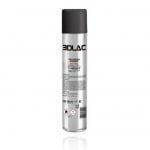
Para obter maior aderência à superfície da sua impressora 3D recomendamos a aplicar 3DLAC na base da plataforma.
Poderá encontrar no seguinte LINK
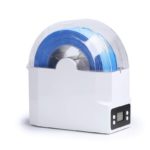
Este material é altamente higroscópico, absorvendo rapidamente a humidade do ar passados poucos minutos após aberto, impossibilitando desta forma a correcta impressão 3D do mesmo. O resultado das impressões 3D de materiais com humidade tendem a ser frágeis e de acabamento irregular ou em certos casos, torna-se simplesmente impossíveis de imprimir.
Deverá de usar soluções de caixas fechadas com dessecante como sílica ou caixas próprias secadoras de filamento.
Poderá encontrar no seguinte LINK
Download:
Technical and Safety Data Sheet
50g- Rolo
HTPLA For the Lulz Metallic Green HTPLA ( Community Inspired ) - Cor
1.75mm (+-0.05mm) - Espessura / Tolerância de diâmetro
Muito Fácil - Facilidade de Impressão
FormFutura High Gloss PLA - ColorMorph combina o melhor de duas cores High Gloss PLA num só filamento. Este filamento de alto brilho combina todos os benefícios do High Gloss PLA com uma estética multicolor inovadora.
As belas propriedades de morphing de cor deste filamento irão criar efeitos multicoloridos a partir de todos os ângulos. Experimente uma mudança de cor impressionante com cada mudança na fonte de luz ou ângulo de visão.
Objectos de impressão 3D com uma bela estética de mudança de cor
Crie belos objectos com um acabamento superficial suave e sedoso
Faça criações impecáveis sem camadas visíveis
Disponível em 6 brilhantes variantes de morphing coloridas de dois tons
Adequado para aplicações em estética, design, e arte
Adequado para decoração de casas e artigos domésticos
Adequado para ideias criativas e projectos de visualização

A FormFutura foi fundada em 2012, em Amesterdão, Holanda., de produção de filamentos para impressão 3D de alta qualidade.
Tornou-se rapidamente numa marca inconfundível com clientes em todo o mundo.

Orientações gerais de impressão *
| Nozzle size: ≥ 0.15mm | Layer height: ≥ 0.1mm | Experience level: Beginner |
| Print temp: ± 215 - 245° C * | Fan speed: 50-100% | Buildplate adhesion: EasyFix Nr. I |
| Heat bed: ± 60° C | Enclosure needed: No |
*) As definições apresentadas acima destinam-se a servir de orientação para encontrar as suas definições de impressão ideais. Estas gamas nas definições devem funcionar para a maioria das impressoras, mas por favor sinta-se à vontade para experimentar fora destas gamas se achar que é adequado para a sua impressora. Há muitos tipos diferentes de impressoras, hot-ends, e offset de impressora que é extremamente difícil dar uma configuração geral de um tamanho para todos.
*) Se usar um bico de aço vanádio / aço temperado e/ou carboneto de tungsténio, então por favor aumente a temperatura de impressão até 240 - 245° C para manter o alto brilho. Se ainda tiver problemas em perder o brilho, pode baixar a ventoinha de arrefecimento da peça para 50% ou menos. Para bicos de latão e cobre pode imprimir a215 - 225° C. Por favor, sinta-se à vontade para experimentar estas configurações.



Para uma correcta manutenção da sua impressora 3D, recomendamos sempre que trocar de material de filamento 3D, a efectuar uma purga com filamento especial de limpeza.
Desta forma garante que não ficam vestígios de material nas paredes do nozzle, evitando o acumular de crosta que é criado sempre que efectua trocas de material.
Com este produto evita problema como "clogs" e "jams" e fará com que o seu nozzle mantenha-se sempre limpo, durando muito mais tempo.
Poderá encontrar a partir de 1.49€ no seguinte LINK

Para obter maior aderência à superfície da sua impressora 3D recomendamos a aplicar 3DLAC na base da plataforma.
Poderá encontrar no seguinte LINK

Este material é altamente higroscópico, absorvendo rapidamente a humidade do ar passados poucos minutos após aberto, impossibilitando desta forma a correcta impressão 3D do mesmo. O resultado das impressões 3D de materiais com humidade tendem a ser frágeis e de acabamento irregular ou em certos casos, torna-se simplesmente impossíveis de imprimir.
Deverá de usar soluções de caixas fechadas com dessecante como sílica ou caixas próprias secadoras de filamento.
Poderá encontrar no seguinte LINK
750g - Rolo
PLA Silk High Gloss ColorMorph Pink & Purple - Cor
1.75mm (+-0.05mm) - Espessura / Tolerância de diâmetro
215º a 245º - Temp. recomendada do Hotend
0º a 60º - Temp. recomendada da Heated bed
Fácil - Facilidade de Impressão
FormFutura High Gloss PLA - ColorMorph combina o melhor de duas cores High Gloss PLA num só filamento. Este filamento de alto brilho combina todos os benefícios do High Gloss PLA com uma estética multicolor inovadora.
As belas propriedades de morphing de cor deste filamento irão criar efeitos multicoloridos a partir de todos os ângulos. Experimente uma mudança de cor impressionante com cada mudança na fonte de luz ou ângulo de visão.
Objectos de impressão 3D com uma bela estética de mudança de cor
Crie belos objectos com um acabamento superficial suave e sedoso
Faça criações impecáveis sem camadas visíveis
Disponível em 6 brilhantes variantes de morphing coloridas de dois tons
Adequado para aplicações em estética, design, e arte
Adequado para decoração de casas e artigos domésticos
Adequado para ideias criativas e projectos de visualização

A FormFutura foi fundada em 2012, em Amesterdão, Holanda., de produção de filamentos para impressão 3D de alta qualidade.
Tornou-se rapidamente numa marca inconfundível com clientes em todo o mundo.

Orientações gerais de impressão *
| Nozzle size: ≥ 0.15mm | Layer height: ≥ 0.1mm | Experience level: Beginner |
| Print temp: ± 215 - 245° C * | Fan speed: 50-100% | Buildplate adhesion: EasyFix Nr. I |
| Heat bed: ± 60° C | Enclosure needed: No |
*) As definições apresentadas acima destinam-se a servir de orientação para encontrar as suas definições de impressão ideais. Estas gamas nas definições devem funcionar para a maioria das impressoras, mas por favor sinta-se à vontade para experimentar fora destas gamas se achar que é adequado para a sua impressora. Há muitos tipos diferentes de impressoras, hot-ends, e offset de impressora que é extremamente difícil dar uma configuração geral de um tamanho para todos.
*) Se usar um bico de aço vanádio / aço temperado e/ou carboneto de tungsténio, então por favor aumente a temperatura de impressão até 240 - 245° C para manter o alto brilho. Se ainda tiver problemas em perder o brilho, pode baixar a ventoinha de arrefecimento da peça para 50% ou menos. Para bicos de latão e cobre pode imprimir a215 - 225° C. Por favor, sinta-se à vontade para experimentar estas configurações.



Para uma correcta manutenção da sua impressora 3D, recomendamos sempre que trocar de material de filamento 3D, a efectuar uma purga com filamento especial de limpeza.
Desta forma garante que não ficam vestígios de material nas paredes do nozzle, evitando o acumular de crosta que é criado sempre que efectua trocas de material.
Com este produto evita problema como "clogs" e "jams" e fará com que o seu nozzle mantenha-se sempre limpo, durando muito mais tempo.
Poderá encontrar a partir de 1.49€ no seguinte LINK

Para obter maior aderência à superfície da sua impressora 3D recomendamos a aplicar 3DLAC na base da plataforma.
Poderá encontrar no seguinte LINK

Este material é altamente higroscópico, absorvendo rapidamente a humidade do ar passados poucos minutos após aberto, impossibilitando desta forma a correcta impressão 3D do mesmo. O resultado das impressões 3D de materiais com humidade tendem a ser frágeis e de acabamento irregular ou em certos casos, torna-se simplesmente impossíveis de imprimir.
Deverá de usar soluções de caixas fechadas com dessecante como sílica ou caixas próprias secadoras de filamento.
Poderá encontrar no seguinte LINK
750g - Rolo
PLA Silk High Gloss ColorMorph Blue & Green - Cor
1.75mm (+-0.05mm) - Espessura / Tolerância de diâmetro
215º a 245º - Temp. recomendada do Hotend
0º a 60º - Temp. recomendada da Heated bed
Fácil - Facilidade de Impressão